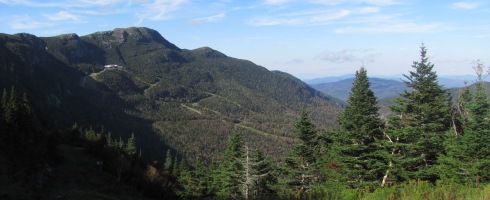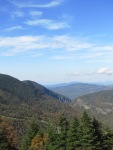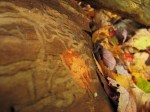Photo Credit – Emma Kast
Written By – Buff Lindau
Said to be possibly the largest contingent from one school, 38 students and 2 professors from Saint Michael’s College joined 12,000 protesters encircling the White House in Washington on November 6 in protest of the tar sands pipeline proposed to go down the center of the North American continent. A tweet from Tarsandaction said Saint Michael;s was one of three colleges sending large numbers of students to the event.
“On Sunday we took a stand both for Democracy and for our future,” said Saint Michael’s student Liam Callahan, one of the trip organizers. “Oil companies fight with the power of money, but on Sunday we showed that we can fight back with the power of people.”
“Although the Keystone Xl tar sands pipeline is just one issue,” Callahan said, “it serves as a proxy for the greater environmental movement. With this issue as a tangible rallying point, my hope is that we will finally end our complacency and take action against the environmental catastrophes that will plague future generations.”
Green Up & Environmental Studies
Saint Michael’s Green Up organization and the Environmental Studies department helped launch the trip, with biology Professor Valerie Banschbach and English literature Professor Greg Delanty joining 38 students on the bus ride and protest in DC. Green-up leaders Karri Makinen, a senior biology major, and Liam Callahan, a senior history major, organized the trip in response to Vermonter Bill McKibben’s 350.org efforts to let President Obama know that many Americans want him to reject dirty energy and move to cleaner alternatives by refusing the proposed Canada-US pipeline project.
An Associated Press story quoted Saint Michael’s first-year student Dan Quigley as saying the pipeline could have an adverse effect on greenhouse gases and poses a hazard to water supplies. “It’s putting a lot of time and effort into something that’s pulling us into a wrong direction,” Quigley said in the AP story.
Atop the threats to First Nations people in Canada and to the health of millions in the U.S. and Canada, the project threatens non-human species, Professor Banschbach said, from sandhill cranes to polar bears, which were symbolized in costumes on some of the protesters. Burning, extracting and refining Tar Hill oil, Dr. Banschbach said, is “an unbelievably inefficient process.” And she said “Further climate change resulting from green house gas emissions” is inevitable from processing the oil of tar sands.
Famed Irish poet & professor of English Greg Delanty participated in a White House protest of Tar Sands in August 2011, where he was briefly arrested. His commitment to the environment was a motivating example for the Saint Michael’s student participants on Nov. 6. Five alumni living in DC joined the 40-person Saint Michael’s College group.
“It is important for all of us to act upon what we know,” Professor Delanty said, “to take an active part in trying to change old ways of thinking and doing. It is for ourselves we act, and for each other and the other beings on the planet – as grand as this sounds, it is simply true,” he said.
“As soon as I heard about this opportunity to protest the construction of the proposed Keystone XL Tar Sands Pipeline, I knew I had to act,” Karri Makinen said. “The protest was a huge success,” Makinen said, “with an estimated 12,000 people converging at the white House to make a strong statement that Obama could not have missed.”












